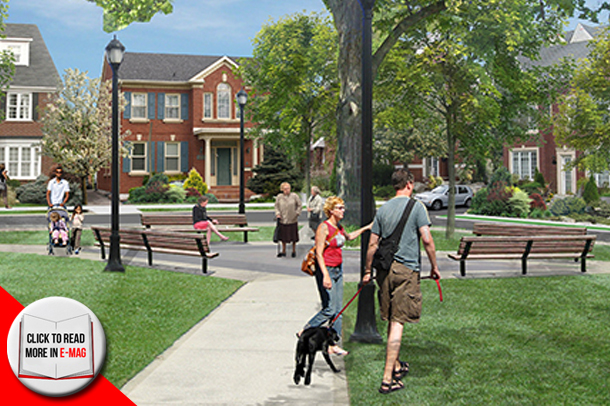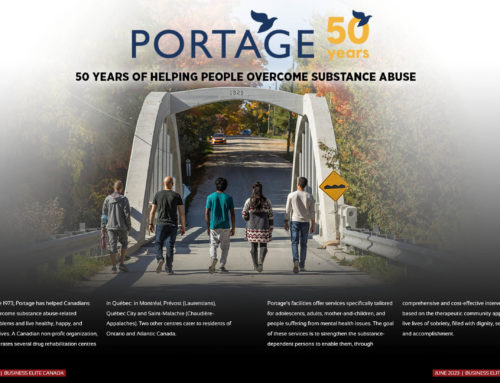Canada Green Building Council (CaGBC): Building Lasting Change
By: Syed Bilal
Within the last couple decades, the construction industry has seen a tremendous change, in not only technology used for construction practices but also in policies, regulations and standards which members in the industry work towards. The practice of sustainable building, or green building, has encouraged the P3 (private and public) sector to be mindful of their environmental impact when working on new buildings or renovating existing ones. Green building has not only improved the impact of the building in its surroundings, but has opened numerous opportunities for employment, and increased the standard of living for those who work or reside in a ‘green’ building. We had the opportunity to learn more about the organization in Canada responsible for bringing such a change to the industry; the Canada Green Building Council.
We had the opportunity to converse with Thomas Mueller, President and CEO of the Council. The Council has grown from three members in 2005 to the industry changing role it plays now, including a membership of over 1700 companies and organizations dedicated to sustainability. Prior to bringing the LEED standard to Canada, Mueller worked as part of the regional government in Vancouver, where he held the role of Division Manager.
The construction industry occupies and encompasses structures and plays a significant role in infrastructure which uses significant amounts of energy and water, produces waste, and allows a place for numerous individuals to spend their time. The Canada Green Building Council sought to improve the impact the industry would have on its immediate surroundings.
Thomas Mueller, who joined the Council as a founding member of the Board of Directors in 2002, worked to establish the council to where it is today and in 2005 became the President and CEO. The not–for-profit organization has been involved in advocating green building policies with all levels of government and private sectors in Canada, and as a result has changed the way a developer or a designer would view and operate a project.
The CaGBC was responsible for adapting Leadership in Energy and Environmental Design (LEED) certification to the Canadian, an industry standard which is now commonly used and has made every project integrate energy or waste management plan, which reaches for certain levels of LEED certification. LEED is a rating system which is recognized internationally in over 135 countries as a standard for excellence in green building. It is hard to find a commercial office or a residential condominium that doesn’t strive for a LEED certification. It’s the quality of living that allows for such consideration of LEED standards, occupants and developers alike now look for specific standards in their building, whether it is cleaner air, better waste management or a greener environment. Communities have been transformed to better support a healthier standard of working, living and growing. Canada alone has over 4,000 LEED registered buildings and over 1,000 certified – making it the second highest number in the world.
As their core activity, the CaGBC provides a “verification process for developers and builders who have followed through on their commitment to design, construct and operate a building to a higher environmental standard,” Mueller says.
CaGBC operates in eight different Chapters which are responsible for different provinces, from the Atlantic to the West Coast. Each Chapter is represented by individual Boards and Executive Directors as part of the green building movement.
The last three years have been pivotal in terms of the green trends adopted by key players in the industry. One of these trends emphasizes existing buildings, predominantly owned by the private sectors that are now being approved for LEED certification. The private sectors have adopted these sustainable standards, and major projects have been renovated to be able to compete for high LEED ratings.
This change has been adopted not only by developers and engineers, but also tenants who now demand greener office space. Buildings that are LEED certified provide a cleaner atmosphere for tenants to work and live in, which is proven to improve productivity.
Higher productivity and lower energy and maintenance costs are just some motivators to reap the reward of building green. The larger demand for green buildings, long term savings by using recyclable materials, and production of lower heating costs are attracting more and more companies to aim for LEED certification. The CaGBC works hard to promote and encourage the adoption of LEED standards not only in the private sector but also the public sector, including institutions and government owned properties.
Mueller identifies certain sectors and organizations that own a substantial amount of real estate, which can benefit from adopting green building practices. Residential communities are witnessing positive responses in living standards and long term costs associated with operations, but this is not to say that green building has been implemented in every community. The comparison between such communities and those built with green building policies make advocating for green building easier as the benefits of implementing these programs are clearly evident.
“[The] green construction industry will continue to adopt more and more green building products, as green buildings are doubling every three years at a global level,” Mueller says. “[Green building] became its own sector for innovation and job employment, and has helped improve water and air pollution and waste.”
Mueller is focusing his efforts on continuing to work with the Government of Canada and other agencies to develop green building policies, and to educate the commercial and residential sectors to see the benefits of implementing LEED programs. Using a national approach, the Council aims to improve green building by-laws, and the past decade has seen a network increase with 1,700 member organizations, and Chapters with 3,000 members. In addition, the number of LEED accredited professionals has continued to grow and is now well past 13,000.
For those organizations looking to implement green construction, design and practices into their business model and building portfolio, the CaGBC has various educational programs, at introductory and at an advanced level to help companies and professionals learn the required skills they need to practice green building. For more information on the CaGBC, visit their website at http://www.cagbc.org.







